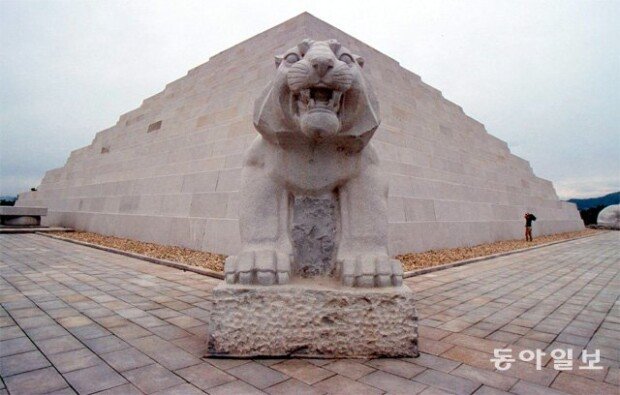Excavation of Dangun’s mausoleum changes N. Korea’s perception
Excavation of Dangun’s mausoleum changes N. Korea’s perception
Posted May. 16, 2018 08:05,
Updated May. 16, 2018 08:05

While vigorous exchanges are expected between the two Koreas in the research of history and cultural assets, Gojoseon, an ancient Korean kingdom, has remained out of attention. However, as the first state in the history of Korea, Gojoseon is believed to be more significant in the two Koreas’ perception of a history in the future.
Until the early 1990s, North Korean academics were critical of a viewpoint that considers Dangun, founder of Gojoseon, as the progenitor of Koreans. They also officially viewed that Gojoseon was located in Liaodong, according to “North Korean academics’ recent studies on Gojoseon” by Oh Dae-yang, associate professor at the Academy of Asian Studies of Dankook University, and “North Korean academics’ research trends on Gojoseon” (2006) by Ha Moon-sik, professor at Sejong University, both included in “Research trends in the history of Gojoseon ― Issues and prospects by country since 2000,” which is to be published by the Northeast Asian History Foundation.
Yet, the North’s perception completely changed in 1993 with the excavation of the Mausoleum of Dangun, and it started to see the Korean people as one ethnic family that shares Dangun as the original progenitor.
The Mausoleum of Dangun is located on the slope of Mount Taebak, northwest of Kangdong near Pyongyang, North Korea. North Korean academia argued that the remains of a man discovered within the tomb were around 5,000 years old and that they belonged to Dangun. However, this claim is not believed to be credible because North Korean researchers did not use the radiocarbon dating technique, which is generally used to measure the age of relics less than 10,000 years old. Instead, they used a technique that is usually for older historic artifacts.
Following the excavation of the Mausoleum of Dangun, North Korea changed its view and argued that Gojoseon was founded around the 30th Century B.C. in Pyongyang. Also, the North said that at one point, Gojoseon expanded its territory to cover the entire Korean Peninsula, Liaodong, Jilin, and even the southern region of Maritime Territory. Based on such arguments, North Korean scholars developed a “theory of culture in the Taedong River” in 1998, which insists that cultures of the Old and New Stone Ages independently emerged in Pyongyang gave rise to the civilization of the Bronze Age, leading to the establishment of Gojoseon.
“The theory of culture in the Taedong River was employed as a means for North Korea to overcome crises during the 1990s when the country’s socialism system was faltering,” said professor Oh. “The perception system was built to solidify the regime in 1998, the 50th anniversary of the North Korean regime.”
Jong-Yeob JO jjj@donga.com







